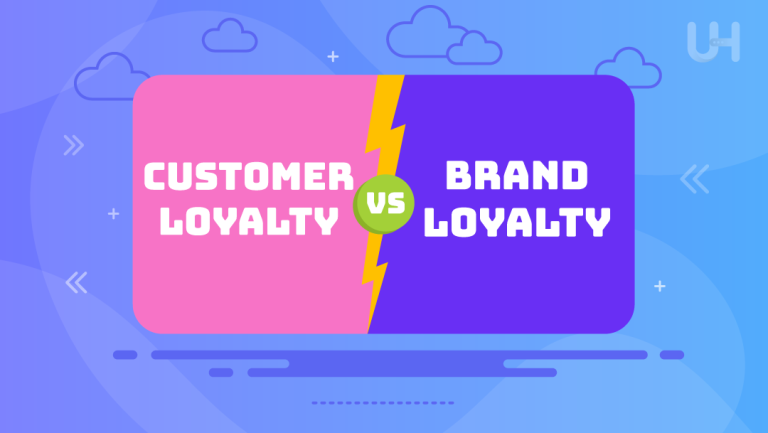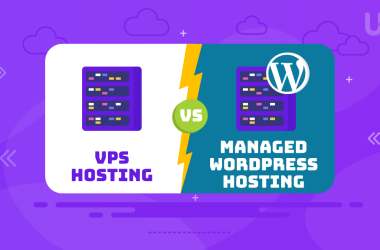Chatbots have become an integral part of modern businesses. They are indispensable for providing 24/7 customer support, handling queries, and accepting complaints and feedback. With the advent of AI, a new level of traditional customer support has been unlocked. So, in this article, we will take a deep dive into AI chatbots vs traditional customer support to evaluate which is better for you.
Providing exceptional support is paramount to customer retention and overall business growth. However, with fast-paced technological advancements, the debate on whether traditional customer support vs AI chatbots are better for business is raging strongly. So, let’s weigh the pros and cons of each and evaluate how AI is poised to revolutionize the future of customer service once and for all.
What are Chatbots?
Chatbots are automated tools designed to interact with users through text or voice interfaces. Initially, these bots were rule-based, relying on pre-programmed responses to specific queries. Chatbots are worth using as they can streamline mundane tasks like answering FAQs or directing customers to the right department. Thus, saving time. However, their capabilities were limited before AI integration, often leaving users frustrated with the lack of flexibility.
What is a Conversational AI Chatbot?
Conversational AI chatbots take automation to the next level. Unlike their rule-based predecessors, AI-powered bots use machine learning and natural language processing (NLP) to understand user intent and engage in more fluid, natural conversations. These bots can learn and adapt from each interaction, offering personalized responses and handling more complex queries.
For example, instead of just answering simple questions, AI chatbots can assist with troubleshooting, recommending products, or managing appointments. Furthermore, they are cost-effective, easy to maintain, and work flawlessly with any reputable CRM hosting plan. Let’s check out the primary benefits and drawbacks of AI-powered chatbots.
Pros
- Chatbots provide customer support around the clock, improving customer satisfaction without human intervention
- They handle multiple conversations simultaneously, allowing businesses to scale customer service effortlessly during peak times
- After initial setup, chatbots have low operational costs, reducing the need for large human support teams
- Chatbots provide quick answers, eliminating wait times for users and improving service efficiency
- AI-powered chatbots can access customer data to provide personalized responses, enhancing the user experience
- Chatbots offer uniform responses across interactions, avoiding human errors or inconsistencies
Cons
- Chatbots struggle with complicated or sensitive issues, which still require human intervention
- AI chatbots lack the emotional understanding and empathy that human agents provide, limiting their ability to offer compassionate support
- Building a sophisticated AI chatbot requires significant upfront investment in time, resources, and expertise
- Despite advances in AI, chatbots may misinterpret user intent or provide inaccurate responses due to limitations in natural language processing
- Data collection by chatbots raises potential privacy and security issues, especially in sensitive industries like healthcare, especially HIPAA texting for therapists.

How do AI Chatbots Operate?
AI chatbots operate by utilizing technologies like Natural Language Processing (NLP) and machine learning (ML) to engage in human-like conversations. Here’s a breakdown of how they work.
Understanding Input
AI chatbots use NLP to interpret and understand the text or voice input from users. This involves analyzing the structure and meaning of the words to identify user intent. For example, if a customer asks, “What’s my order status?” the chatbot recognizes that the user wants information about an order.
Intent Recognition
After understanding the input, the chatbot determines the intent behind the message. This is crucial for responding appropriately. Intent recognition involves classifying the input into predefined categories. For example, requesting product information, seeking help, etc.
Processing and Formulating a Response
Once the intent is identified, the chatbot retrieves the relevant information or response from its database or backend system. AI chatbots use machine learning algorithms to generate responses based on patterns from previous interactions. They may also leverage process mining techniques to analyze customer interaction workflows and access real-time data from integrated systems like Customer Relationship Management platforms to offer personalized responses.
Learning and Improving Over Time
AI chatbots can improve their accuracy over time through machine learning. They learn from past conversations, adapting and refining their responses to better understand complex or ambiguous queries. This continuous improvement makes AI chatbots smarter with more use.
Integration with External Systems
Advanced chatbots integrate with external platforms such as databases, CRM systems, and eCommerce platforms. This allows them to offer personalized assistance like order tracking, account management, or making product recommendations based on customer data.
Elevate Your Website with Fast Dedicated Hosting
Enjoy a quick connection with 10Gbps dedicated servers from UltaHost for your high-traffic websites, with exceptional performance, enterprise-grade tools, and 24/7 support.
AI Chatbots vs Traditional Customer Support: Head-to-Head Comparison
When deciding between AI chatbots and traditional customer support, consider the following key differences.
Scalability
AI chatbots can handle multiple conversations simultaneously, making them highly scalable. This makes them ideal for businesses experiencing high volumes of customer inquiries. We recommend upgrading to a premium dedicated server hosting plan for an enhanced user experience. Traditional customer support, on the other hand, is limited by the number of available human agents, which can lead to longer wait times during peak hours.
Availability
AI chatbots operate 24/7, providing instant responses regardless of time zones. This constant availability enhances customer satisfaction by reducing response times. Conversely, traditional support typically follows business hours, meaning customers may need to wait for assistance outside business hours.
Consistency
Between AI chatbots and traditional customer support, the former delivers consistent responses, free from mood or fatigue. Human agents, while capable of empathy and creative problem-solving, may vary in performance depending on their experience or external factors. Therefore, consistency in service quality can be harder to maintain with traditional support teams.
Handling Complex Queries
Human agents excel in dealing with nuanced, sensitive, or complex issues that require empathy and discretion. AI chatbots, especially conversational ones, can manage complex queries to an extent but may struggle with highly emotional or intricate problems that humans can better address.
Cost-Effectiveness
AI chatbots are a one-time investment, with low operational costs post-deployment. They can reduce staffing needs and lower customer service expenses in the long run. On the other hand, traditional support requires continuous investment in salaries, training, and resources, making it a costlier option.
Comparison Table
Here is a detailed breakdown of the differences between AI chatbots and traditional customer support.
| Feature | AI Chatbots | Traditional Customer Support |
| Scalability | Can handle unlimited simultaneous interactions | Limited by the number of human agents |
| Availability | 24/7 service | Restricted to business hours |
| Consistency | Delivers uniform responses | Varies by agent experience and mood |
| Cost | One-time setup, low operational costs | High ongoing costs (salaries, training, etc.) |
| Handling Complexity | Manages some complex tasks with AI logic | Best for complex and sensitive issues |
| Customer Experience | Personalization through data-driven responses | Human touch, empathy, and adaptability |
Conclusion
If you are still unsure whether to choose AI chatbots or traditional customer support, we’re here to help. If your business requires more than just answering basic queries, a conversational AI chatbot is the better choice. It offers more dynamic interactions and can handle more complex workflows. However, if your customers need empathy, emotional intelligence, creativity, and intuition, traditional customer support is the way to go. The choice is yours!
Are you looking for an affordable web hosting solution for your business website? Choose Ultahost’s Shared Webhosting Plans for inexpensive servers and complete peace of mind. Enjoy free DDoS protection, 24/7 support, cPanel hosting, and more, starting at just $3.60/month.
FAQ
What is an AI chatbot?
An AI chatbot uses natural language processing (NLP) and machine learning to interact conversationally with users, answering queries intelligently.
Will AI chatbots replace traditional customer support?
AI chatbots may complement, but won’t fully replace traditional customer support, especially for complex, emotional, or nuanced interactions.
AI chatbots vs traditional customer support: Which is better?
AI chatbots are faster and more scalable, while traditional support excels at handling complex, sensitive issues requiring human empathy.
AI chatbots vs traditional customer support: Which should I choose?
Choose AI chatbots for scalability and cost-efficiency; opt for traditional support if your business handles complex, emotional inquiries.
What is the difference between chatbot and chat support?
Chatbots are automated programs, while chat support involves live human agents offering personalized and empathetic customer service.
Can I use a chatbot for customer support?
Yes, businesses commonly use chatbots to handle simple, repetitive queries and reduce customer service response times.
Is traditional customer support relevant in 2025?
Yes, traditional support will remain relevant for complex or sensitive issues where human empathy and judgment are irreplaceable.










